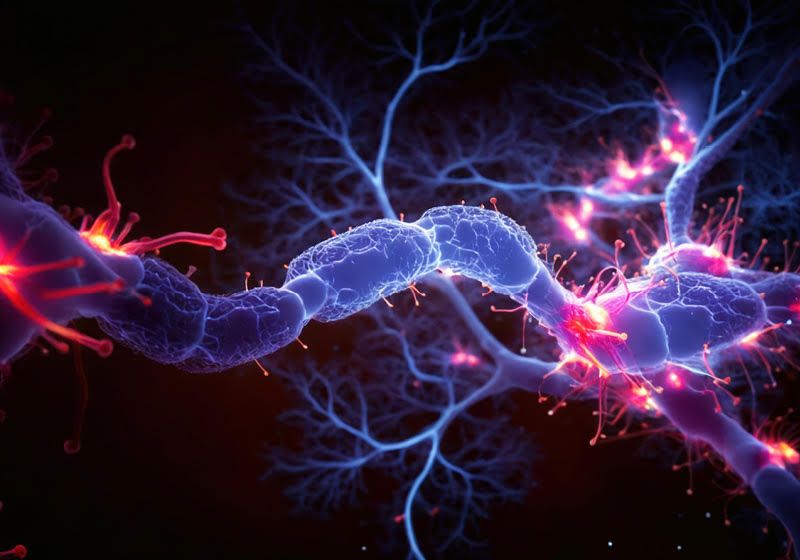Multiple sclerosis (MS), an autoimmune neurological disorder wherein the myelin that covers neurons is damaged, affects more than 1.8 million people globally. Demyelination disrupts signal transmission in the nervous system and can eventually cause breakdown of the nerve fibers or axons, resulting in a wide range of physical and psychiatric symptoms.
However, increasing evidence indicates that changes driving MS begin long before symptoms appear.1 Indeed, when Ahmed Abdelhak, a neurologist at the University of California, San Francisco (UCSF) and his colleagues studied the serum of people with MS, they observed distinct autoantibodies years before the symptoms started.2
Ahmed Abdelhak is a neurologist at UCSF who studies biomarkers to understand the sequence of events and assess treatment outcomes in multiple sclerosis.
Ahmed Abdelhak
“Putting those pieces together among many other things in the literature told us that actually the time before MS starts is immunologically quite complex and there are so many things happening there,” said Abdelhak. This prompted the researchers to further investigate the events before MS symptom onset.
Now, by leveraging high-throughput proteomics, Abdelhak and his colleagues identified MS-associated protein signatures in people with MS nearly seven years before symptom onset, suggesting that the immune system attacks myelin even earlier than previously thought.3 Their findings, published in Nature Medicine, offer insights into the sequence of events during MS development and potential biomarkers for detecting the disease early.
“The findings are very exciting [and] intriguing,” said Helen Tremlett, an MS researcher at the University of British Columbia, who was not associated with the study. “They tell us biologically what may be going on before MS [symptom] onset and do suggest that we have an opportunity…to recognize MS earlier.”
To get a clearer picture of the molecular and cellular signatures in MS, Abdelhak and his colleagues investigated protein expression during different disease stages. They leveraged samples from the Department of Defense Serum Repository obtained during mandatory HIV testing among the US military recruits since 1989.

Ari Green, a neuroimmunology physician scientist at UCSF, studies the development and biological validation of biomarkers for use as in clinical trials to treat multiple sclerosis.
UCSF
“A number of years ago, some researchers realized [that this was] a really phenomenal dataset,” said study coauthor Ari Green, a neuroimmunology physician scientist at UCSF. Veterans get ongoing healthcare, so their samples can be tracked through the years, he explained.
From the cohort, Abdelhak, Green, and their colleagues analyzed serum samples of 134 people with MS and nearly 80 people without the disease. Examining more than 5,000 proteins in these samples revealed that the sera of people from the two groups expressed distinct proteins.
The researchers observed a spike in the levels of a protein called myelin oligodendrocyte glycoprotein, an indicator of myelin damage, nearly seven years before a person’s diagnosis. About a year later, they observed heightened neurofilament light polypeptide, which signals damage to the axons. In contrast, glial fibrillary acidic protein (GFAP), indicative of astrocyte involvement, was heightened only at the time of clinical diagnosis. This was rather unexpected, said Abdelhak.
“The surprising part was not seeing the myelin injury happening seven years [before symptom onset] or one year before nerve injury,” said Abdelhak. “The surprising part was seeing the glial activation, what we saw with GFAP, happening such close to the disease onset and was not evident at all before the onset.”
Additionally, the researchers also observed changes in the serum proteome pointing towards the involvement of interleukin 3 and other proteins involved in immune reactions. To explore whether these differentially expressed proteins could help define a biomarker panel, Abdelhak and his team applied machine learning models to their dataset. Of these, two of the models could identify presymptomatic people with MS with high specificity and sensitivity.
Disease evidence years before symptom onset did not surprise Tremlett, partly because her team recently found that compared to people without MS, those with MS visit physicians more often for up to 15 years before diagnosis.4 The two results complement each other, she noted.
“Their findings are exciting. It’s really an interesting proof of principle,” said Tremlett. However, she cautioned that the sample numbers were small, and since the samples belonged mostly to men in the military, they may not be generalizable to the typical population that suffers from MS, which is significantly more common in women.
Replicating and validating their findings in a larger and separate cohort could help, even if it is difficult to find such presymptomatic samples, she added. “Maybe sometime in the future, we can recognize people [with MS] earlier than we do presently.”
Green agreed that the samples they analyzed may not reflect the population traits of those who commonly suffer from MS. The team is already working towards overcoming this limitation. “We are continuing to test and look for populations where we could further evaluate and validate some of the techniques we have,” said Green.
Despite this, Green noted that the results are really important and warrant further studies. He hopes that their findings will pave the way to diagnosing the disease at an earlier stage when treatment success is higher. “[The] earlier you enter into trying to treat people, the more successful you are preventing them from becoming disabled.”

